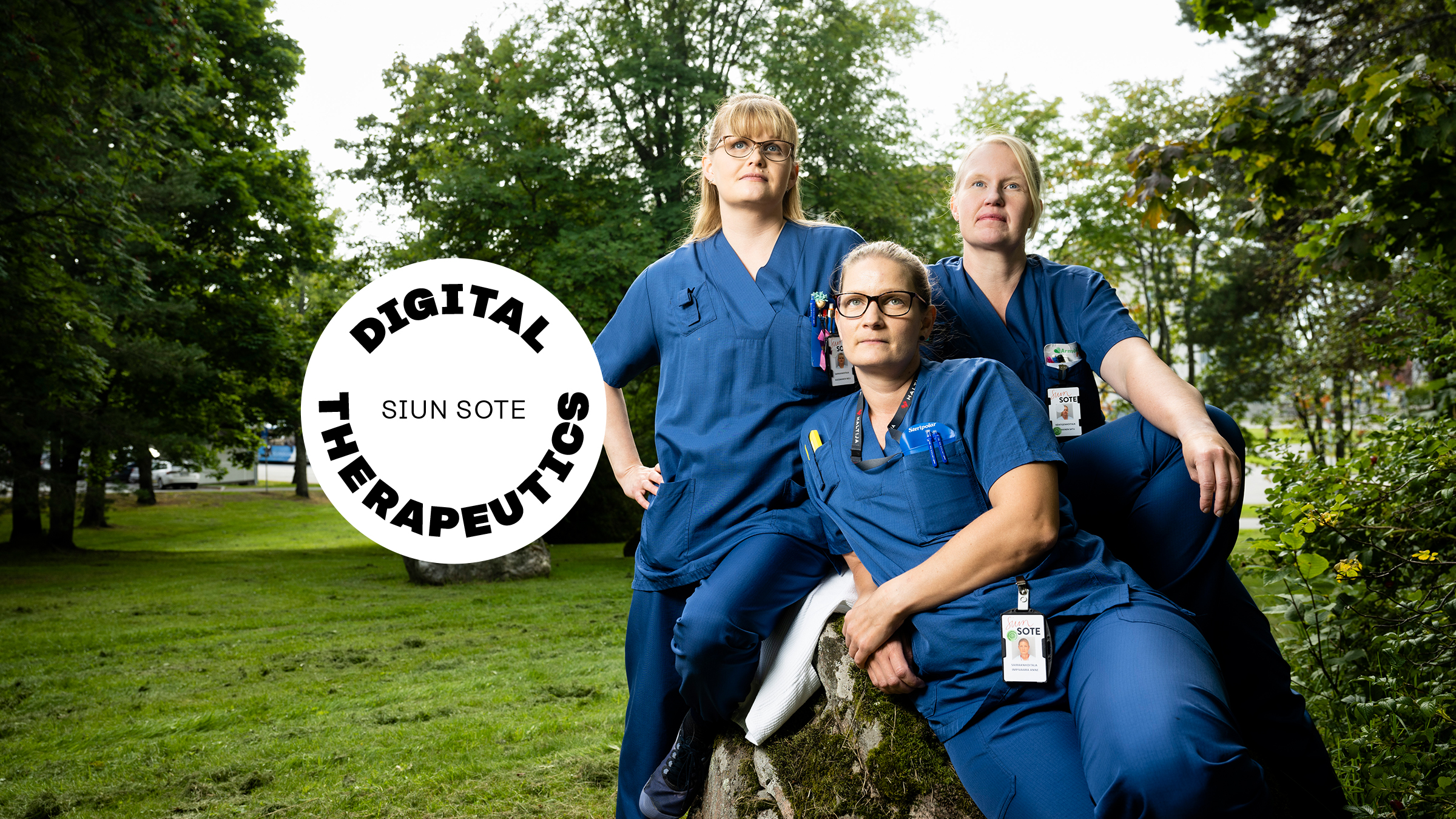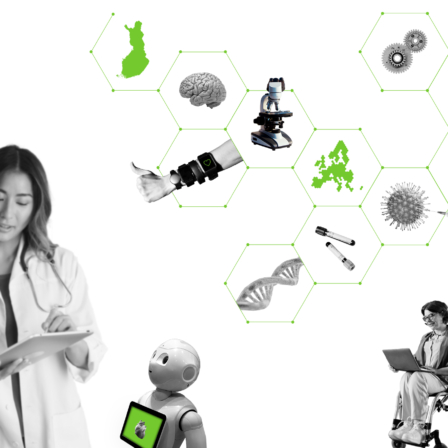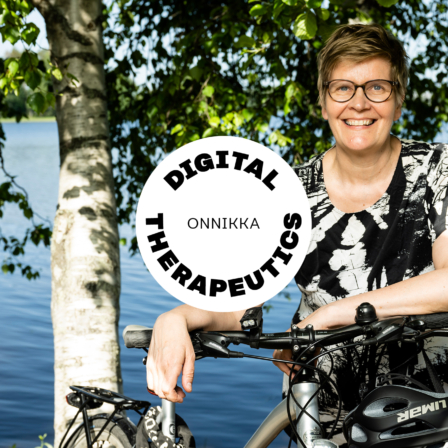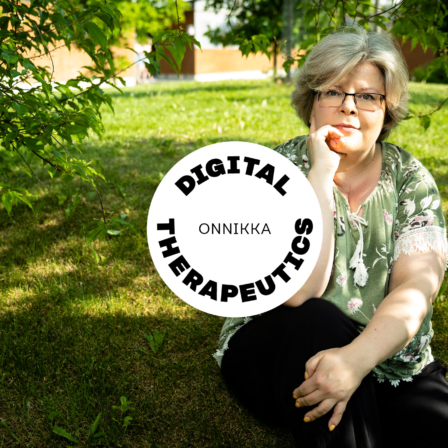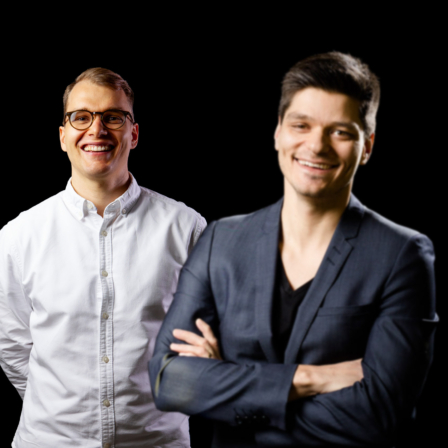Sixty cancer patients tried out the digital Kaiku Health self-monitoring app in the well-being county of North Karelia, most of them at the Siun Sote Oncology and Palliative Care Centre. The year-long trial period ended in May this year.
According to healthcare staff, the biggest benefit came from the weekly symptom questionnaire, where the app asked patients about their symptoms and their severity relating to each type of cancer and treatment.
In terms of medication, the pilot project involved colorectal cancer patients. Most of them meet with a nurse every couple of weeks when undergoing intravenous chemotherapy.
“Patients can call if new symptoms appear between visits or if previous symptoms get worse. But not everyone calls, and patients especially don’t mention mild changes until the consultation or the chemotherapy visit, if at all,” says nurse Nelli Kuosmanen of the Siun Sote Oncology and Palliative Care Centre.
In the symptom questionnaire, on the other hand, patients report even minor changes when asked by the app. Nurses can see the answers immediately and respond to them as needed.
Patients received treatment advice for mild symptoms
During the trial a few patients experienced a significant worsening of their cancer symptoms between treatment visits. The nurses brought these self-reported symptoms to the attention of the treating doctor, and medication could be changed quickly.
“The symptom checker in the app provides patients with the experience of being cared for between visits,” says Kuosmanen.
For mild symptoms, the Kaiku Health app automatically provided the patient with treatment instructions: for example, for mild nausea or constipation, over-the-counter medication available from a pharmacy. Mild symptoms appeared as a yellow tag in the software used by nurses.
For more severe symptoms, patients were advised to contact the hospital if the nurses did not have time to contact the patients first. Severe symptoms were shown as a red tag in the nurses’ software.
“Thanks to the self-reporting symptom checker, patients felt that they were involved in their own treatment. And it helped us a lot when the patient had already thought about the symptoms before treatment. It can be difficult for patients to remember what symptoms they have had since they last saw us,” says nurse Anne Impivaara.
The symptom checker made it easier to go for treatment
Radiographers Satu Vilokkinen and Sanna Tolonen also highlight the smoothness of the treatment visits.
“Radiotherapy is a quick process. In fifteen minutes, we interview the patient and administer treatment. Patients felt that it was calmer to list symptoms on the app than in the treatment session,” says Vilokkinen.
“Knowing about the symptoms beforehand also helps so that if we have any questions from the doctor about them, we can ask and tell the patient the answer in the treatment session,” adds Tolonen.
These cancers are felt to be so intimate that it’s easier for patients to respond on the app than face-to-face.
radiographer Sanna Tolonen
The radiotherapy trial treated prostate and colorectal cancer patients. The digital treatment questionnaire was of great benefit in these types of cancer. Patients gave the nurses more complete information about their condition than when asked face-to-face.
“These cancers are felt to be as so intimate that it is easier for patients to answer on the app than face-to-face,” says Tolonen.
When asked by the app, patients with prostate cancer were more likely to report that radiotherapy resulted in sexual dysfunction. Face-to-face, they would rarely mention it to the radiographer.
In colorectal cancer radiotherapy, abdominal laxity is a usual side effect. It is sometimes difficult in face-to-face meetings for nurses to know the actual number of times patients experience diarrhoea, but the symptom checker was very clear, allowing nurses to ask more specific questions when patients visit.
“In general, patients felt more secure reporting their symptoms on a regular basis and the nurse would then see if any steps had to be taken,” says Vilokkinen.
“Nurses also feel more sure when they know what the patient is really doing. With some patients, it is sometimes unclear during a treatment visit whether the patient is reporting all their symptoms. Self-reporting gives us more certainty about the symptoms,” says Vilokkinen.
Follow-up information for healthcare staff
The radiographers themselves felt that they had learned something new.
During radiotherapy, the patient is first examined very carefully. Radiotherapy is administered every weekday for four weeks for prostate cancer and five weeks for colorectal cancer. The patient is then transferred to the surgical outpatient clinic for urological follow-up and is no longer seen by the radiographers.
However, in the remote monitoring trial, the radiographers continued to monitor patient’s self-reporting for about four months following treatment.
“We received more detailed information from prostate cancer patients about how urination problems can persist and even temporarily worsen after radiotherapy. Now we are better able to tell new patients how their recovery is likely to progress,” says Tolonen.
Even unnecessary communication
In addition to the Kaiku Health app’s symptom checker, the app’s chat window allowed users to send messages to nurses, though only some patients used this feature.
The chat window generally provided nurses with important information about the patients’ condition and with more detailed questions.
The idea was to lower the patient’s threshold for asking the nurses questions, but with some patients this threshold was too low for the nurses.
Patients would also asked nurses about health issues that had nothing to do with the cancer treatments. Some even chatted about things that had nothing to do with health.
Nurses were also notified of these messages and used their working time to formulate polite replies.
The main benefit of the chat window, according to the nurses, was that it helped to fill in gaps in the symptom checker.
With the checker, it was not possible to give a more detailed explanation immediately after the patient reported a particular symptom, and this but had to be written in the message box at the end.
For example, if a patient ticked the box in the questionnaire about experiencing diarrhoea, it was sensible to specify in a separate message that the symptom had occurred at other times too and so was not necessarily linked to having cancer or being treated for it.
“Or if, for instance, the patient reported bleeding, pain or an increased need to urinate, it would have been useful to know how much blood there was, how much the pain there was and how often they needed to urinate. During the trial, these questions were adjusted to be more specific based on feedback,” explains Vilokkinen.
All patient groups should be included
Now the trial period of the Kaiku Health self-monitoring app has ended at the Siun Sote Oncology and Palliative Care Centre. The results of the trial are satisfactory, and a call for applications is currently underway.
What do nurses think should be taken into account in the future when trying to build similar, at least partly digital, care pathways?
All the nurses interviewed point out that the monitoring app should be linked to the patient information system so that nurses do not have to run two systems.
“All staff should be engaged with the system, and everyone should have time to learn how to use it properly,” stresses Impivaara.
“The app should also be used by all patient groups, so that there is no need to remember who it applies to,” Kuosmanen adds.
The pilot project was part of Sitra’s Health Data 2030 project, which develops solutions and ground rules for cross-border use of health data in Europe and supports the competitiveness of the Finnish health sector. Sitra’s aim has been to gather information on the use of new digital therapies as part of the care workflow.
More information
Nelli Kuosmanen, sairaanhoitaja, Siun soten syöpäkeskus
nelli-tuulia.kuosmanen (at) siunsote.fi
